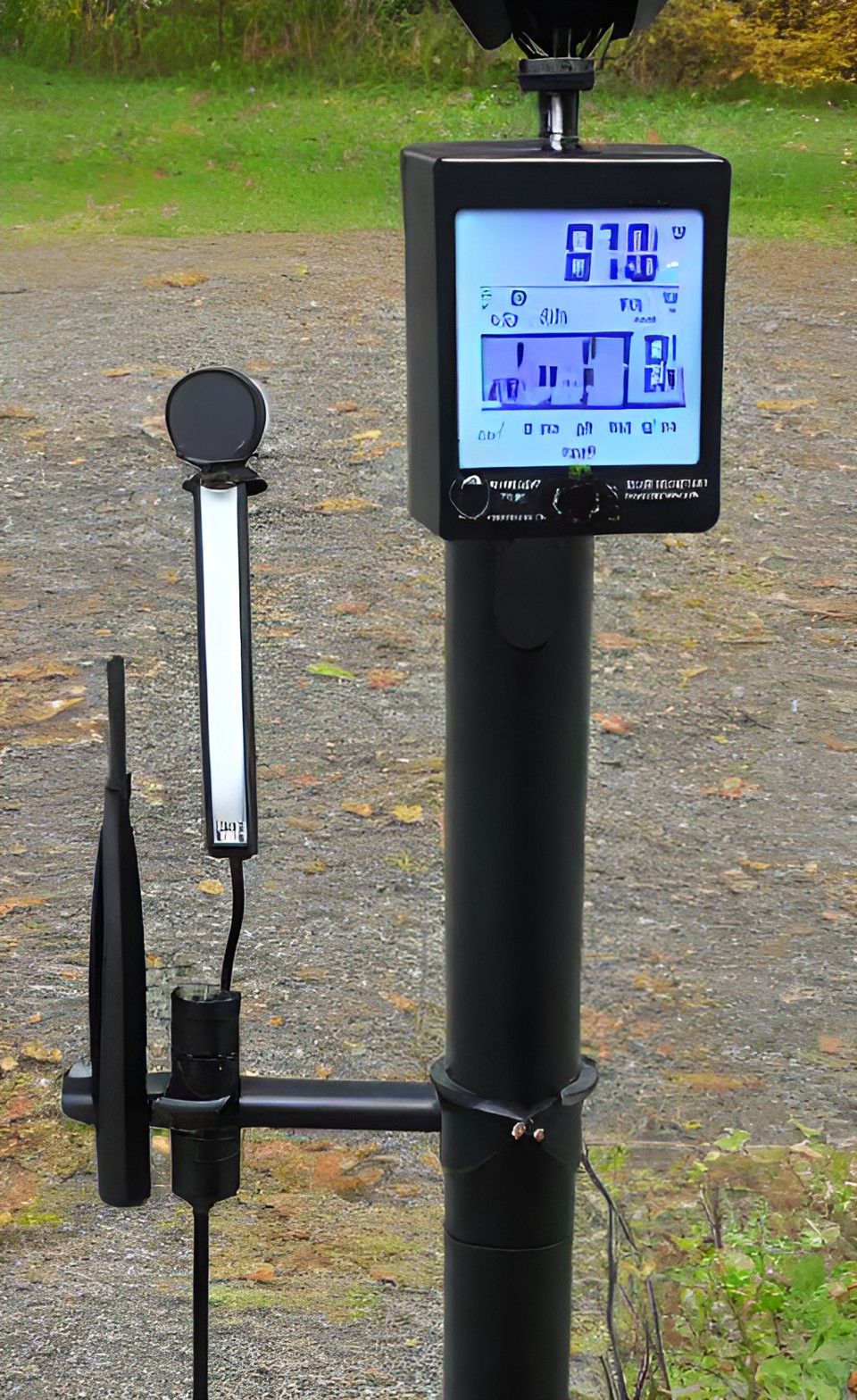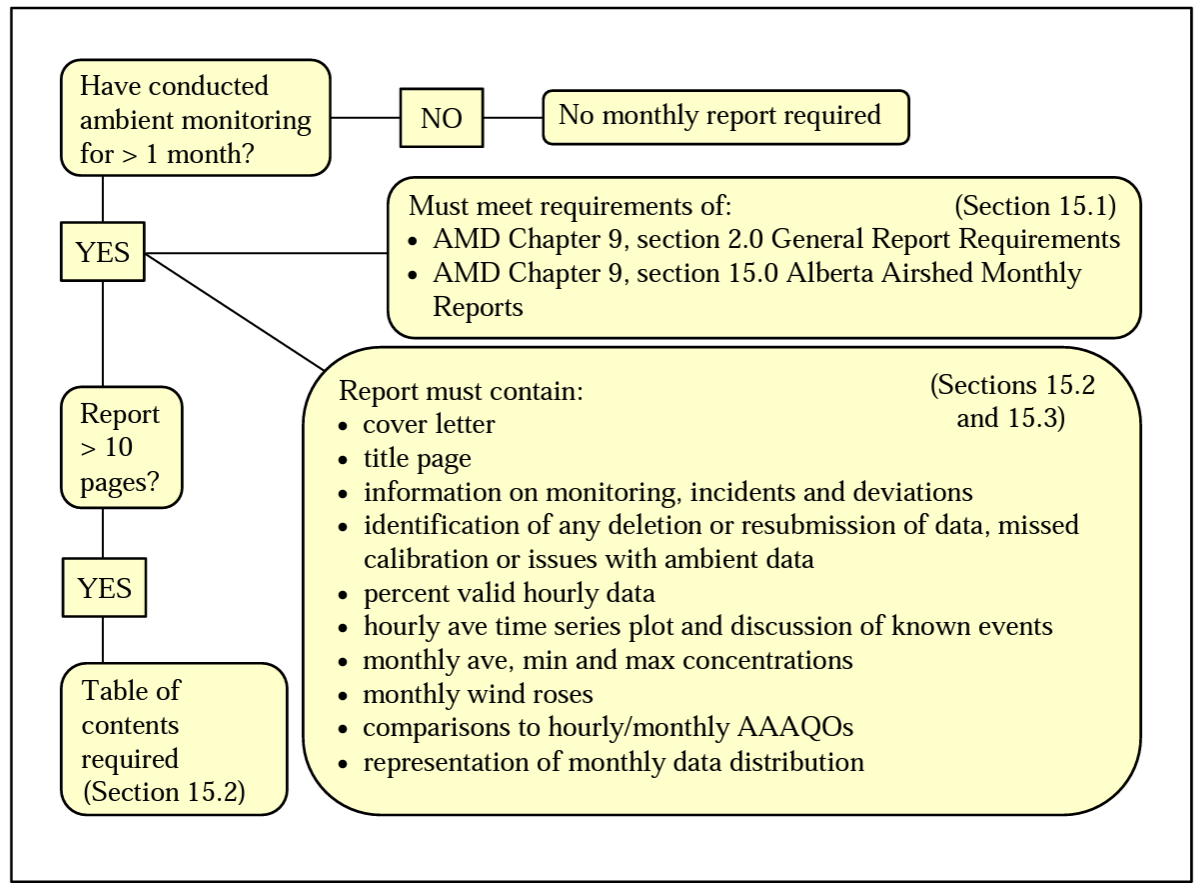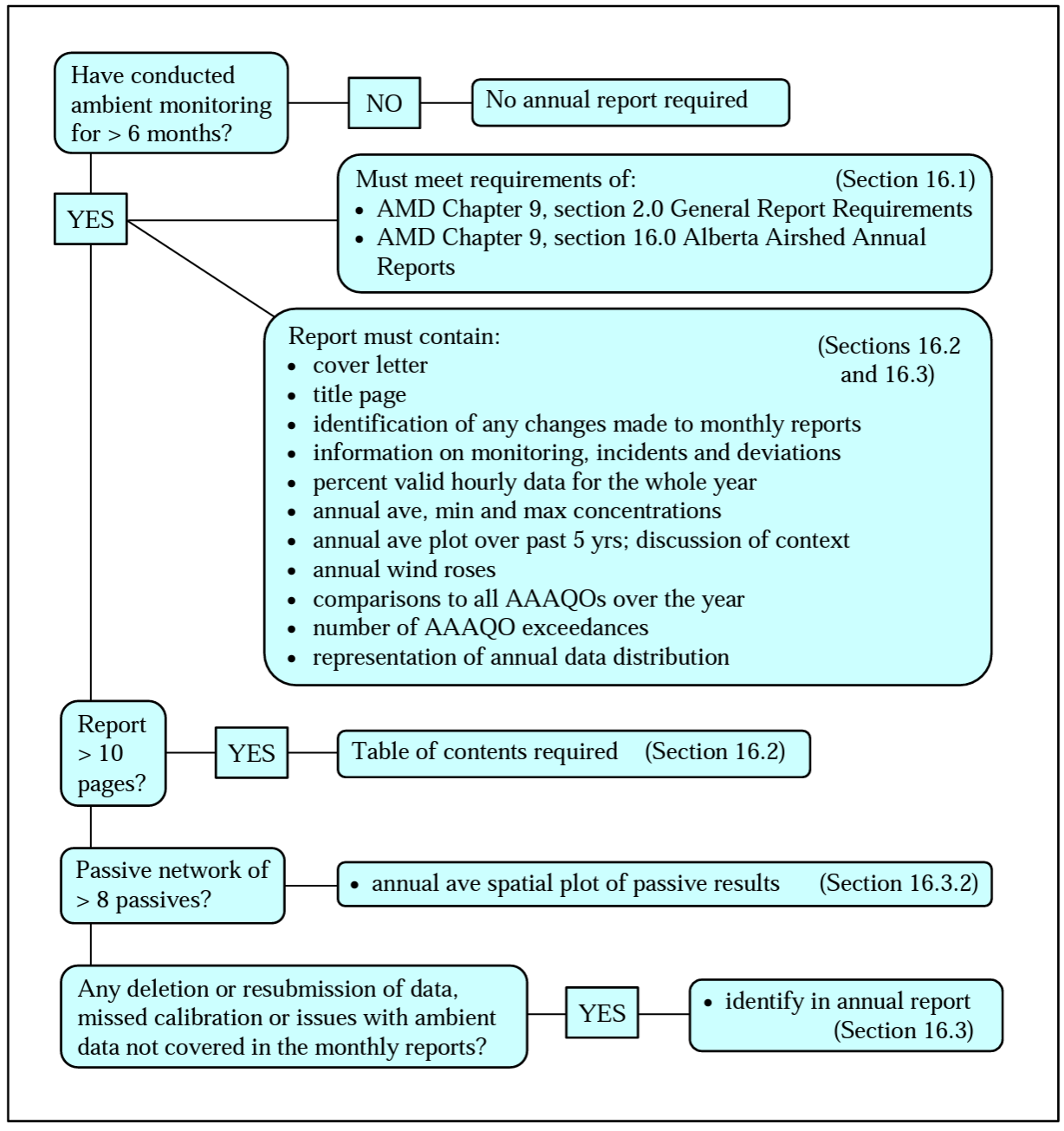- Air Homepage
- Alberta Air Quality
- Ambient Air Quality Monitoring
A Comprehensive Guide for Reporting Ambient Air Quality Monitoring Data in Alberta
An Alberta airshed is a region or area within Alberta, Canada, designated for ambient air quality monitoring, managing, and improving air quality. In addition to addressing air pollution, airsheds help us protect the environment and public health.
Mastering AMD Chapter 9 for Alberta: Airshed Reporting 101 - Does your airshed's annual report have every graph, table, and certification required by the province? Get accurate, actionable air quality data by unlocking the definitive guide to AMD's airshed reporting rules.
 Airshed reporting station
Airshed reporting stationEach airshed in Alberta has its own unique characteristics and air quality challenges. To mitigate the impact of air pollutants on the local population and ecosystem, customized air quality monitoring and regulations are often set up in urban and industrial areas.
Find out how Alberta airsheds monitor and report air quality by checking the original document, starting in Section 12. A summary of each section is provided for you below. Alberta airsheds curate data to help the province preserve and improve air quality while supporting sustainable development and economic activity.
You can ensure that air quality data in Alberta is reliable and actionable for protecting public health and the environment. Communities and regulators can make informed decisions and improve air quality.
Check out this guide to learn more about Alberta's airsheds and how they keep the air clean. We'll have a healthier and more sustainable future with your help.
Section 12 - Airshed General Reporting Requirements
In Alberta, industrial operations, if members of their encompassing airshed, don't have to report ambient air quality monitoring. Otherwise approved operations are to report in accordance with sections 1 to 11 of Chapter 9.
This document outlines the reporting requirements for Alberta airsheds. Airsheds have to submit various types of reports, including ambient air quality monitoring data, real-time continuous monitoring data, exceedance and performance reports, notifications, and amendments to previous reports.
A report generally has the following content to start:
All reports submitted to the Director must include contact details, airshed identification, and a date. The report must be legible and contain all the details.
Reporting forms:
Reporting forms and templates are available, and the person responsible must use them. The person responsible must submit the information in a format that's appropriate for the monitoring, unless a specific form is specified.
Certification for information:
It's the person's responsibility to certify data and reports are accurate, complete, and meet requirements. Signing off on the cover letter confirms the information is accurate and complete is mandatory. Air data submitted electronically also needs to be certified.
The lab analysis report must be signed by an authorized lab staff member. There are deadlines for these certifications.
Electronic reports:
All reports and related documents have to be submitted electronically unless otherwise stated. Reports and data that didn't require electronic submission must be in a digital, extractable format.
Submissions from contractors:
The contractor's details and the work they did need to be identified when submitting data or reports. The person responsible must review and sign off on the content, even if a contractor is involved.
In summary, this document in Alberta Air Monitoring Directive (AMD) where Chapter 9 lays out what information you need to report ambient air quality monitoring data in Alberta. It indicates what to include, how to use reporting forms, certification procedures, electronic submission guidelines, and how contractors get involved.
Section 13 - Ambient Air Quality Monitoring Data from Alberta's Airsheds
Here's how to submit ambient air monitoring data in Alberta, including real-time data. What you need to know:
Submission of ambient air data:
Monitoring air quality in Alberta has specific requirements, including continuous monitoring. Data collected by Alberta airsheds has to go into Alberta's Ambient Air Quality Data Warehouse electronically.
Submission deadline:
Monitoring data must be submitted by the end of the month. Data from portable monitoring stations is also needed. Data from passive and intermittent samplers has to be submitted within a year.
Here are some guidance on quantitative figures:
The number of significant figures in the data should reflect how accurate and precise the measurement is. Chapter 9 has specific numerical rounding rules outlined to follow. Also, convert your data to Alberta's Ambient Air Quality Data Warehouse units.
Data quality identification:
Data must be flagged to indicate quality, according to AMD's Data Quality Chapter. Metadata, like station info, has to be submitted and updated.
Calibration reports:
Calibration reports must be prepared and submitted electronically for each continuous ambient air analyzer calibrated during the month.
Real-time ambient air quality monitoring data:
Alberta Real-time Ambient Air Website needs real-time data to inform the public about air quality. There are detailed instructions in the Alberta Real-time Ambient Air Data Submitter's Guide. Quality control, reporting, and collection are all part of Alberta's air monitoring requirements.
Section 14 - Reporting on Alberta Airshed Exceedances & Performance
Air quality reporting requirements in Alberta airsheds. Here's a quick recap:
Immediate Reporting:
Report it right away if the air quality exceeds certain standards (AAAQOs). Report any problems with air monitoring equipment or sensors that could keep them offline for a while. You should also report monitoring equipment that doesn't meet the minimum requirements.
Data on air quality should be provided quickly when the Director asks (like during wildfires).
What to do:
It's the responsible party's responsibility to address and fix issues as soon as they're reported. In these situations, you need to follow the detailed procedures in "Guide to Release Reporting", and be prompt. Each airshed should have these reporting requirements.
Section 15 - Monthly Airshed Reports
Here's what's required in Alberta airshed monthly reports.
Monthly reports:
If you've collected air quality data for a month or more, report it monthly. The information you need to include in this report is in Section 15 of Chapter 9. If you're preparing a report for an approved industrial operation, make sure you submit it by their deadline. When it's not for an industrial operation, submit the report by the end of the month following data collection.
Report contents:
Include a cover letter about monitoring analyzer uptime, equipment changes, special air studies, or reporting irregularities. Include a title page and a table of contents if the report is longer than 10 pages. Analyze any audits and corrective actions for continuous air monitoring stations. Include deviations from authorized monitoring methods, non-standard conditions affecting data quality, values outside quantification limits, air-related incidents, and anything else the director specifies.
Monitoring data:
Analyze the air quality data from the month, including hourly averages, maximums, and minimums for each parameter. Each ambient air quality monitoring station should have a wind rose (unless it doesn't have meteorological data).
When there are exceedances, compare measured air concentrations to AAAQOs using the specified averaging and completeness criteria. Analyze each parameter's data distribution by comparing with an AAAQO. It helps guarantee the quality of air monitoring data and gives a comprehensive picture of air quality.
The AMD provides a flowchart for monthly reporting, here is what it looks like.
 Monitoring and reporting of ambient air quality for the Alberta airshed organizations
Monitoring and reporting of ambient air quality for the Alberta airshed organizationsSection 16 - Annual Reports from the Alberta Airsheds
Here are the requirements for Alberta airshed annual reports. This is a simplified version:
An overview of the annual report:
Annual reports summarize and analyze air quality data. An overview of overall performance, seasonal patterns, annual trends, and air quality exceedances, with respect to AAAQOs. It depends on what type of monitoring the Alberta airshed does.
You'll need:
General report requirements are outlined in the Reporting Chapter. There's an example annual report on AMD's website. When the annual report is more than 10 pages, you need a table of contents.
You need an annual report if you've been monitoring ambient air for more than 6 months. You also have to submit an annual report on time if you're representing an approved industrial operation.
The annual report has these things:
Include a cover letter with information about air quality standards, equipment changes, special air studies, and reporting or monitoring irregularities. It should have a title page and a table of contents if it's long. Make a list of your continuous and intermittent monitoring stations and audits.
You should note any deviations from authorized monitoring methods, non-standard conditions that affect data quality, values outside of quantification limits, and additional requirements from specific monitoring methods. And any other info the director specifies.
Annual air quality monitoring:
Annual reports summarize and analyze ambient air monitoring data. There's no need to report ambient air monitoring if the industrial operations in your airshed already do it. An annual report should include data deletions, missed calibrations, and other issues not covered in monthly reports.
Monitoring results:
For each parameter, give the percentage of valid hourly data, the annual average, and the maximum and minimum concentrations. Include a graph of annual average concentrations over the last five years. For networks with more than eight passive sites, create a wind rose for each monitoring station using passive sampler data.
Compare measured air concentrations with all AAAQOs over the year. Note how many AAAQOs were exceeded per month at each monitoring site. Analyze each parameter's data distribution with an AAAQO. In addition to helping ensure the quality of air monitoring data, the reports provide a comprehensive air quality report every year.
This flowchart is provided in Section 16.
 Annual Reporting flowsheet for airsheds
Annual Reporting flowsheet for airshedsSection 17 - Airshed Notifications
These are the requirements for Alberta airsheds to notify the Director of specific monitoring activities. Here's a quick rundown:
Certain monitoring activities need to be notified in advance to the Director.
New ambient air quality monitoring stations, new parameters or methods for ambient analyzers or meteorological sensors, and continuous ambient monitoring lasting less than a year all need to be notified. Notifications must be submitted using AMD Notification Template.
For scheduled shut-downs of ambient analyzers or meteorological sensors, the regulator needs 30 days' notice. Also if you're moving an ambient air monitoring station. Let the Director know if the dates change after notification, including the reasons.
Please note:
Air monitoring done solely for the Alberta airshed's use doesn't require a notification unless the airshed wants to submit the data to the regulator. Monitoring must follow AMD for this data to be accepted.
The Alberta Real-time Ambient Air Data Submitter's Guide says to report any problems preventing real-time data submission. These notifications keep the Director in the loop about important changes.
Section 18 - Reports and data amendments for Alberta's airsheds
Here's what to do if you find errors or omissions in ambient air quality monitoring data. What you need to know:
Report resubmission:
AMD Notification Template must be used if reports are found to have errors or issues. Tell the government what's up, what's wrong, and what's coming up. If the Director discovers errors or gets a formal notification from the Regulator, he or she has to submit an amended report. The amended report should be identified as such and referenced.
Data resubmission:
You can report errors in ambient air monitoring data submitted to Alberta's Ambient Air Quality Data Warehouse by following the steps in the Data Submitter's Guide. The Guide says how to submit corrected data. If the regulator tells you to submit corrected data, do it right away.
Resubmission of other data:
If you find errors in other data reported to the Director (not covered in the previous sections), use the AMD Notification Template. Please tell us what's wrong, what's causing it, and what's going to happen.
Correct data within 30 days of discovery or when the regulator notifies you. Environmental reports are more accurate when errors and issues are identified, reported, and corrected quickly.
When you dive deeper into regulations, reporting, and data analysis, you'll realize you need help. Calvin Consulting Group Ltd. is here to help you deal with the complexities. Find out what air quality compliance is all about, and get in touch with Barry for tailored help.

Learn how airsheds master Alberta's air quality monitoring. Find out what you need to know about reporting requirements and data accuracy.
Find out how regulations, reporting, and data analysis converge in Alberta's air quality monitoring. Find out the key requirements for compliance and the nuances of reporting in this comprehensive guide.
The complexity becomes apparent as you go deeper, making expert guidance crucial. That's where Calvin Consulting Group Ltd. comes in. We simplify the complex and make sure you're confident while navigating this complex landscape.
Do you have concerns about air pollution in your area??
Perhaps modelling air pollution will provide the answers to your question.
That is what I do on a full-time basis. Find out if it is necessary for your project.
Have your Say...
on the StuffintheAir facebook page
Other topics listed in these guides:
The Stuff-in-the-Air Site Map
And,
Thank you to my research and writing assistants, ChatGPT and WordTune, as well as Wombo and others for the images.
OpenAI's large-scale language generation model (and others provided by Google and Meta), helped generate this text. As soon as draft language is generated, the author reviews, edits, and revises it to their own liking and is responsible for the content.


New! Comments
Do you like what you see here? Please let us know in the box below.